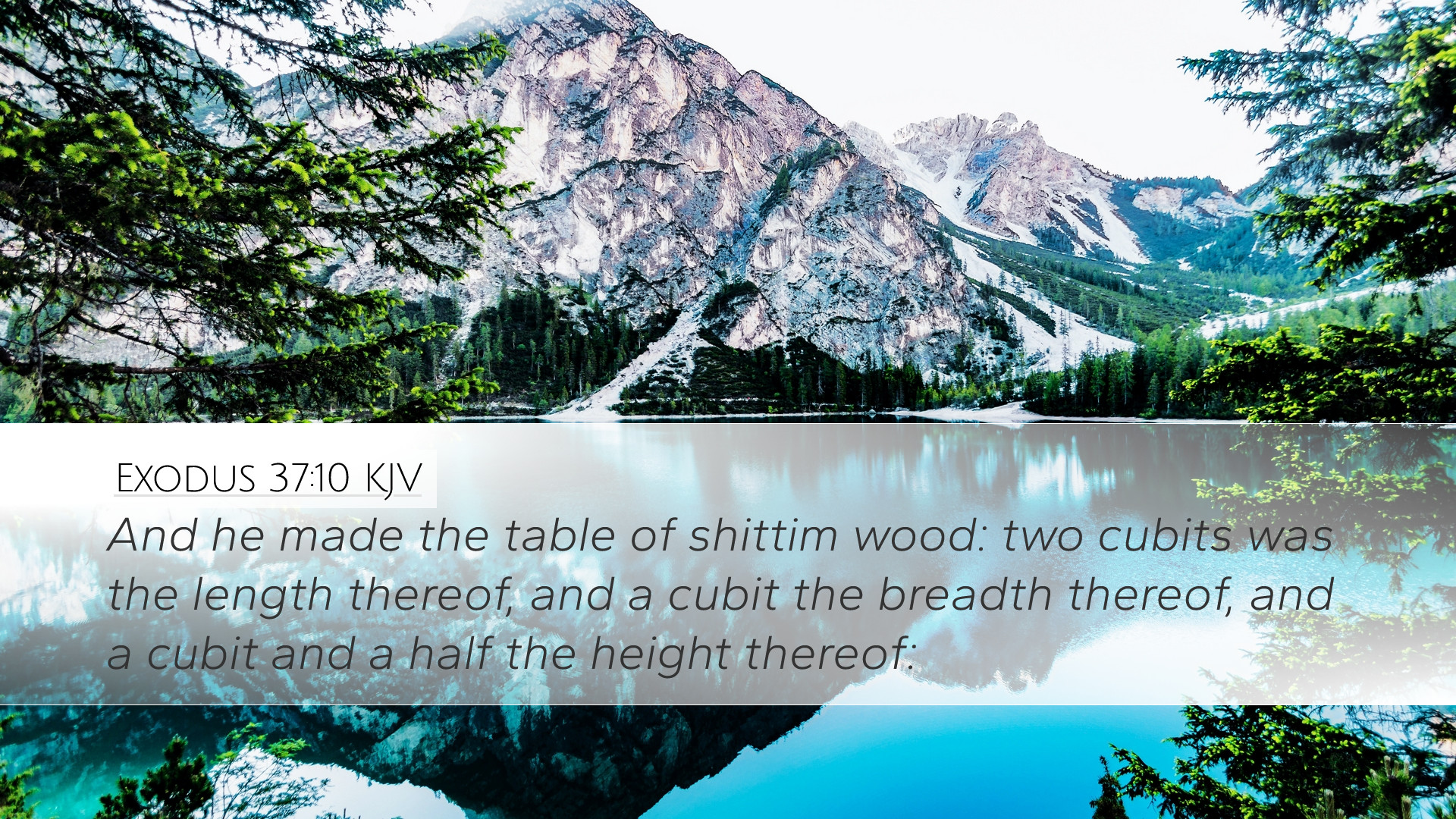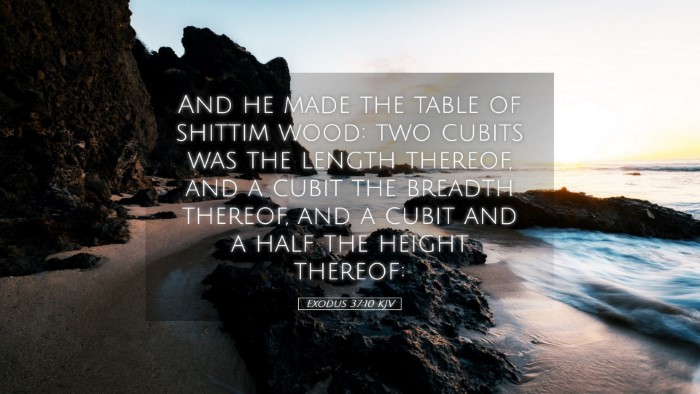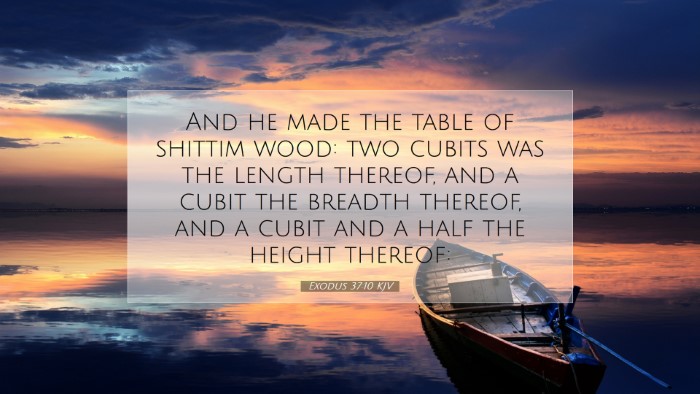Exodus 37:10 - A Commentary
Verse: Exodus 37:10 - "And he made the table of shittim wood: two cubits was the length thereof, and a cubit the breadth thereof, and a cubit and a half the height thereof."
Introduction
The construction of the Tabernacle and its furnishings provided the Israelites with a tangible representation of God's presence and covenant among them. The table mentioned in Exodus 37:10 is more than a piece of furniture; it serves as a significant symbol of communion and God’s continual provision. This commentary synthesizes insights from notable public domain scholars to illuminate the theological depths of this scripture.
Contextual Background
The chapter fits within the narrative of the Israelites' wilderness journey, where God instructs Moses on the precise construction of the Tabernacle (Exodus 25-31). The detailed mention of the components, including the table, reflects the holiness of the worship atmosphere and God’s desire to dwell among His people.
Moses' Instruction
God provided Moses with specific details for the creation of the table, which is essential for understanding the intent behind its design. Each measurement and material used is significant, showing that God's dwelling place was intricately planned for both functionality and symbolism.
Commentary Insights
-
Matthew Henry's Commentary
Henry emphasizes the importance of the table as a representation of God's provision. He notes that the table was to hold the “showbread,” symbolizing God’s continuous supply and the sustenance He provides. Moreover, he links the specifics of its construction to the meticulousness with which God commands His people to worship.
-
Albert Barnes' Notes
Barnes elaborates on the dimensions of the table and its material—shittim (acacia) wood, notable for its durability. He interprets the two cubits in length as signifying the importance of God’s promises, while the cubit and a half height symbolizes a constant posture of worship, as the bread is set before the Lord. This table becomes a central point of communion within the sacred space.
-
Adam Clarke's Commentary
Clarke draws attention to the spiritual implications of the table. He argues that the table supports the showbread, which signifies the twelve tribes of Israel and, by extension, God's relationship with each tribe. The bread represents life, partnership, and God’s covenant with His people. The dimensions suggest that worship needs to be both accessible and exalted, serving as an invitation for the faithful to approach God.
Theological Implications
This verse exemplifies several key theological themes:
-
Divine Provision:
The provision of the table aligns with God’s broader theme of sustenance for His people. It teaches that God is not only present but actively involved in supplying their needs.
-
Communion with God:
The showbread, placed on the table, is a direct symbol of communion. It indicates God’s desire to maintain a close relationship with His people, continually providing for them.
-
Sustaining Life:
Spiritual sustenance is essential, as represented by the bread. Just as physical bread sustains physical life, spiritual bread (Word of God) nourishes the soul.
Practical Applications
For pastors, students, and theologians, this verse offers meaningful insights into worship and communal life:
- Worship requires dedication and attention to detail—reflecting our reverence for God's presence.
- Churches today must create spaces that foster communion, remembering that God desires to dwell among His people.
- The table serves as a reminder of God's continuous provision; believers are encouraged to trust in His daily sustenance.
Conclusion
Exodus 37:10 captures the heart of God’s yearning to be with His people through tangible means. The table made of shittim wood symbolizes not just physical sustenance but also the profound relational dynamics between God and man. Through the offerings placed upon it, believers are invited into a deeper level of communion and remembrance of God's active involvement in their lives.
As we reflect upon this scripture, may we be reminded of the importance of our relationship with God and the spaces we create for worship and community. The table, though an ancient artifact, continues to speak volumes to our present-day lives and our communal faith journey.


